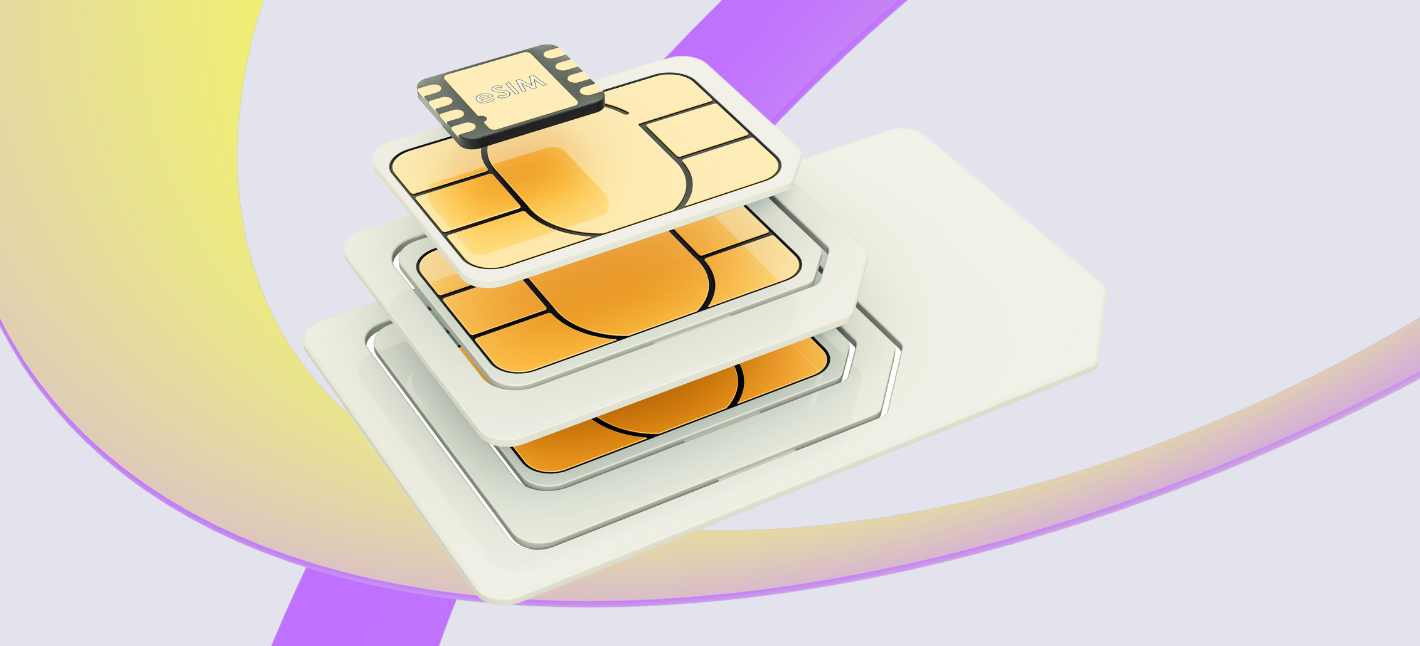IoT Connectivity Products Choosing the Right IoT Connectivity
IoT Connectivity Control Management of Connectivity in IoT
The rise of wearable units has opened new avenues for innovation across quite a few industries. However, to harness their full potential, strong and dependable connectivity options are essential. The selection process for the best IoT connectivity options for wearable devices requires cautious consideration of various factors together with vary, energy consumption, information transmission speeds, and general consumer experience.
Bluetooth is certainly one of the mostly used connectivity technologies for wearables. Its low energy consumption makes it perfect for gadgets that usually run on batteries. Bluetooth allows a seamless connection between units like smartwatches and smartphones, allowing users to receive notifications and conduct health monitoring without significant energy draw. The introduction of Bluetooth Low Energy has enhanced its position in the wearable market by extending battery life while supporting steady data change.
Wi-Fi is usually utilized in more robust wearable purposes, especially in eventualities the place high information throughput is essential. It provides important benefits for streaming data and syncing massive volumes of knowledge. IoT Sim Connectivity. Many smart glasses and superior health trackers use Wi-Fi to push updates and real-time data evaluation. The major disadvantage remains its energy consumption, making it much less suitable for battery-operated wearables meant for prolonged use with out frequent charging.
Cellular connectivity, encompassing standards like LTE and emerging 5G technologies, offers intensive coverage, enabling wearables to operate independently of smartphones. This is especially helpful for fitness trackers that permit customers to maintain connectivity throughout outdoor activities, where smartphone connectivity may be compromised. The introduction of eSIM technology has further streamlined the mixing of cellular connectivity into wearables, offering flexibility in subscriptions.
IoT Connectivity Security Simplified Global IoT Connectivity
LoRaWAN (Long Range Wide Area Network) is one other exciting IoT connectivity choice for wearables, especially in biometrics and healthcare monitoring. Its prolonged vary permits wearables to transmit knowledge over a quantity of kilometers with no cellular connection. This capability is instrumental in remote areas, enhancing the monitoring of patients or individuals in outside situations. Moreover, its low-power profile aligns properly with the energy-efficiency needs of wearable units.
NFC (Near Field Communication) presents a unique but limited possibility for wearables. Primarily seen in contactless payments and keyless entry systems, NFC permits for immediate transactions or knowledge exchanges within shut proximity. While not suitable for steady data switch like other technologies, its simplicity and immediacy make it a priceless addition, notably in devices infused with public transportation options.
Mesh networks, enabled by technologies like Zigbee or Thread, create a unique alternative for wearables inside smart house ecosystems. These technologies enable devices to speak with one another, enhancing performance corresponding to smart house integration and improving knowledge sharing amongst various units. The interconnected nature of mesh networks brings about varied benefits in protection and energy efficiency, which are important in the wearable landscape.
IoT Connectivity Products Top IoT Connectivity Management Platforms
The trade-offs between bandwidth and energy consumption are crucial when assessing the most effective IoT connectivity options. Wearables designed for health monitoring usually prioritize energy effectivity over excessive data throughput. Their capability to collect and transmit small, consistent information packets can leverage low-power protocols without sacrificing general efficiency. This technique is especially effective when thought-about in long-term monitoring scenarios, similar to continual illness administration or aged population health care.
Another notable aspect considerations the consumer expertise related to connectivity choices. Quick and reliable hyperlink institution can considerably improve the usability of a tool. Users usually count on seamless integration with smartphones or different primary devices. This expectation can put pressure on manufacturers to choose on connectivity options that guarantee clean interactions while maximizing battery life.
Security remains a foremost concern for wearable system connectivity. As these devices become increasingly integrated into users' lives, ensuring the safeguarding of sensitive information is paramount. Protocols like TLS (Transport Layer Security) and end-to-end encryption strategies turn into important parts for safeguarding person info transmitted via totally different connectivity frameworks. Collaborating with trusted fourth-party safety vendors can improve a tool's total integrity and consumer confidence.
Market trends point out a growing inclination in the path of multi-connectivity solutions. Wearable units incorporating multiple connectivity choices can adapt seamlessly to various eventualities. A smartwatch, for example, may utilize Bluetooth for quick syncs and NFC for contactless payments while counting on a cellular connection for receiving notifications during workouts. This versatility provides immense value for users who search an all-encompassing gadget that adapts to diverse needs.
IoT Satellite Connectivity Strategies and Challenges of IoT Connectivity
Looking ahead, the importance of interoperability amongst IoT connectivity options will crucially form the design of future wearable gadgets. Seamless integration across different networks will allow wearables to perform extra effectively inside an IoT ecosystem. Ambitious manufacturers are starting to discover APIs that allow gadgets to communicate throughout platforms, amplifying the potential uses of wearables in everyday eventualities.
In summary, selecting the right IoT connectivity options for wearable devices entails a multi-faceted approach. Factors corresponding to power effectivity, data throughput, vary, user expertise, safety, and future tendencies all play important roles in shaping selections on this innovative area. With technology constantly evolving, the focus on optimizing these connectivity methods might be key in unlocking the vast potential of wearable gadgets for users worldwide.
Continuous improvements in connectivity technologies may even drive the next era of wearables, making them extra efficient, more powerful, and more built-in into the lives of users. As new IoT choices emerge and current technologies enhance, the landscape will shift accordingly, paving the greatest way for a smarter, more linked world.
IoT Sim Connectivity Definition of IoT Connectivity

- Cellular connectivity presents widespread coverage and is right for wearables that require fixed information transmission with out dependence on local networks.
- Bluetooth Low Energy (BLE) enables environment friendly communication for short-range purposes, making it good for fitness trackers and smartwatches that sync information with smartphones.
- Wi-Fi is appropriate for wearable units needing excessive bandwidth for tasks like video streaming or massive information uploads, typically utilized in smart glasses and AR devices.
Cloud Connectivity In IoT Survey on IoT Connectivity Technologies and Applications
- LPWAN technologies, such as LoRaWAN and Sigfox, present long-range connectivity with low power consumption, facilitating distant monitoring and tracking functions in wearables.
- Mesh networks enhance the connectivity of wearables by permitting units to relay information to one another, increasing range and reliability, particularly in dense environments.
- Zigbee is efficient for house automation wearables, permitting gadgets to speak seamlessly with smart residence systems while consuming minimal energy.
IoT Connectivity Platform Top IoT Connectivity Management Platforms

- Near Field Communication (NFC) permits quick information exchanges for tasks like contactless payments or pairing between devices, offering added comfort for wearables.
- Satellite connectivity is important for outdoor wearables used in distant areas, guaranteeing functionality where conventional networks are unavailable.
- Dynamic connectivity choices enable wearables to seamlessly switch between varied networks primarily based on availability, enhancing reliability and consumer experience.
M2M IoT Connectivity Evaluating IoT Connectivity Technology Pros and Cons
- 5G expertise promises ultra-low latency and high-speed information switch for superior wearable purposes, similar to real-time health monitoring and augmented actuality experiences.
What are the main IoT connectivity choices for wearable devices?undefinedThe main IoT connectivity options embody Bluetooth, Wi-Fi, cellular networks, Zigbee, and LoRaWAN. Each possibility has its personal use cases: Bluetooth is right for short-range connectivity, Wi-Fi offers greater bandwidth, cellular is suitable for broad coverage, Zigbee is energy-efficient for small knowledge packets, and LoRaWAN is excellent for long-range, low-power purposes.
(IoT Connectivity Products)
How do I select the most effective connectivity option for my wearable device?undefinedChoosing the best connectivity choice is dependent upon varied components like range, power consumption, data transfer needs, and environmental circumstances. Evaluate the appliance's necessities, corresponding to whether or not it calls for real-time information transmission or can function on low energy over longer distances.
What is the function of Bluetooth in wearable devices?undefinedBluetooth is broadly utilized in wearable gadgets due to its low power consumption and ease of pairing. It is suitable for applications like fitness trackers and smartwatches that require short-range connectivity to smartphones or other devices with out draining the battery rapidly.
Is Wi-Fi a good choice for wearables?undefinedWi-Fi is beneficial for wearables that require high-speed internet access and can be charged regularly. It provides larger bandwidth for transmitting bigger quantities of data, making it appropriate for purposes like video streaming or extensive information synchronization.
Resilient IoT Connectivity Growth of Usable IoT Satellites
Can wearable gadgets use cellular networks?undefinedYes, wearable gadgets can use cellular networks, which permits them to attach on to the web without having a smartphone. This choice is right for applications that require real-time knowledge transmission over long distances, such as GPS tracking and emergency companies.
What are Zigbee and LoRaWAN, and how do they apply to wearables?undefinedZigbee is a low-power, mesh networking protocol suitable for short-range communication in smart homes and health monitoring. LoRaWAN, on the opposite hand, is designed for long-range communication with low energy consumption, making it perfect for wearables that need to transmit knowledge over huge distances while conserving battery life.
How does connectivity impression the battery lifetime of wearable devices?undefinedDifferent connectivity options can significantly have an he has a good point effect on battery life. For instance, Bluetooth tends to eat less power in comparison with Wi-Fi and cellular choices. Understanding the iot connectivity definition trade-offs between connectivity sort and battery effectivity is crucial for optimizing wearable gadget efficiency.
What security measures ought to I think about for IoT connectivity in wearables?undefinedSecurity is paramount for IoT units. Implement measures similar to encryption, regular software program updates, secure pairing methods, and system authentication to guard information and maintain user privacy. Always observe greatest practices in IoT cybersecurity.
Managed IoT Connectivity Consolidation of IoT Connectivity
Are there specific compliance standards for IoT connectivity in wearables?undefinedYes, wearables should adjust to various standards like IEEE 802.15.1 for Bluetooth, IEEE 802 - IoT Satellite Connectivity.11 for Wi-Fi, and extra country-specific rules for cellular technologies. Ensuring adherence to those standards offers reliability and ensures person security and knowledge integrity.